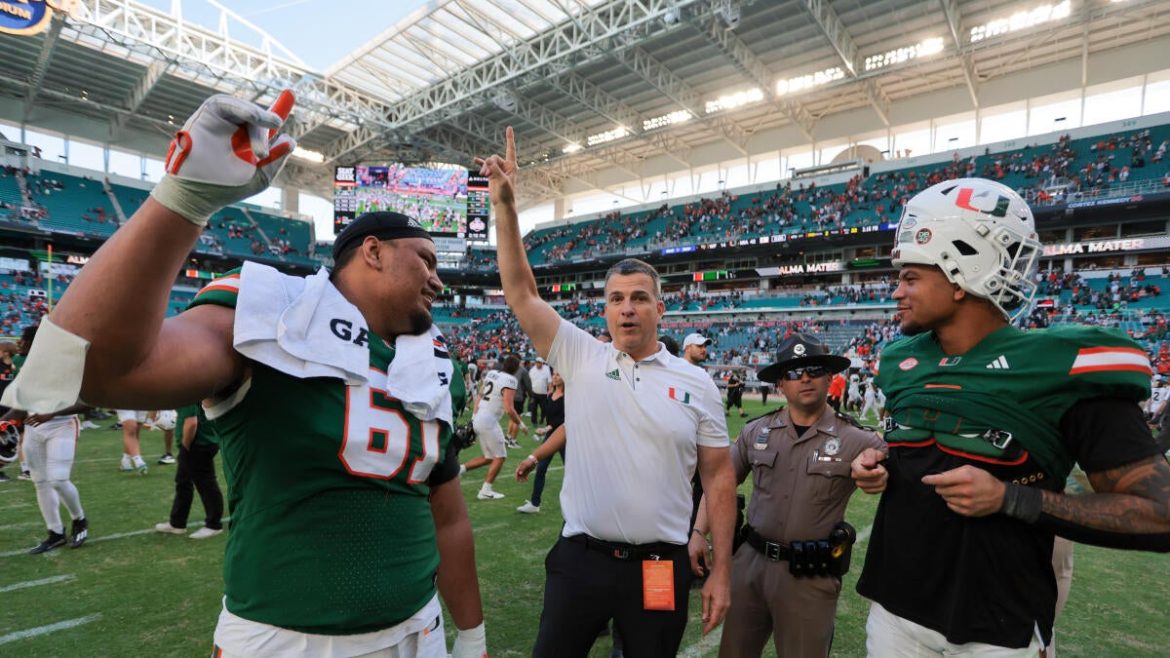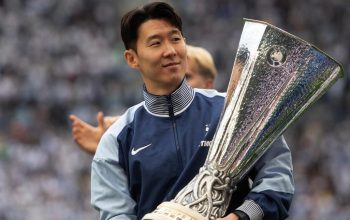The recruitment of five-star offensive tackle Jackson Cantwell by the Miami Hurricanes in 2026 has ignited widespread discussion across college football circles, primarily due to the staggering NIL (Name, Image, and Likeness) deal reportedly valued near $2 million annually. This report delves into the various facets of this landmark commitment, exploring the dynamics of Cantwell’s recruitment battle, the implications of his NIL deal on the collegiate football landscape, and the broader debates surrounding the valuation of high school athletes in an evolving NIL era.
The Recruitment Battle: Miami vs. Georgia, Oregon, and Others
Jackson Cantwell entered the 2026 recruiting cycle as the nation’s consensus top offensive tackle prospect. His commitment was highly sought after by powerhouse programs including Georgia — a long-time leader in his recruitment — Oregon, Ohio State, and others. Miami’s triumph in securing Cantwell’s choice stands as a significant milestone for the Hurricanes, reflecting a strategic and aggressive approach to landing elite talent.
Several factors contributed to Miami’s success. Foremost among these was Miami’s willingness to offer an unprecedented NIL deal reportedly approaching $2 million annually, an investment documented as possibly consuming 10% of Miami’s NIL “salary cap” resources for that recruiting cycle. This financial muscle, combined with the personal rapport Cantwell developed with Miami’s coaching staff, notably head coach Mario Cristobal, tipped the scales despite Georgia’s historic pulling power.
Adding to Miami’s recruiting firepower were endorsements from Hurricanes legends like Vernon Carey Sr. and Jarrett Payton, further underscoring the university’s commitment to cultivating a winning culture and supporting elite prospects.
Dissecting the NIL Deal: Innovation or Excess?
Miami’s reported offer to Cantwell stands among the highest recorded NIL contracts extended to a high school athlete, particularly at the offensive tackle position. While star skill position players—quarterbacks and wide receivers—commonly attract lucrative NIL deals, the generosity accorded to an offensive lineman signals a paradigm shift.
Arguments Highlighting the Deal’s Magnitude
Some college football insiders and commentators question the prudence of allocating an estimated $2 million annually toward a single high school offensive lineman. They argue that offensive line cohesion and development often rest on a collective rather than individual talent basis, suggesting that a more balanced recruitment of multiple high-quality linemen in the 3-4 star range might yield greater long-term dividends than a heavy investment in a single blue-chip talent.
Moreover, skepticism arises around whether a single recruit can justify consuming such a significant share of NIL funds, especially since NIL “caps,” while institutionally encouraged, are not formalized NCAA limits but rather self-imposed or informal budgetary considerations.
Perspectives Supporting Miami’s Strategy
Conversely, proponents underscore the high stakes in securing a consensus top recruit who potentially anchors the entire offensive line for years. Cantwell’s rare size (6-foot-7.5, 325 pounds), athleticism, and skill set offer the Hurricanes a projected cornerstone who could elevate the program’s national stature and on-field competitiveness.
Miami’s previous investments in high-profile recruits—such as the multimillion-dollar NIL deals for quarterback Carson Beck and other notable linemen—suggest a deliberate strategy to compete aggressively in the modern recruiting economy. The Hurricanes appear to be positioning themselves not just to attract talent but to redefine the market for NIL compensation.
Cantwell’s Own Stance
Interestingly, Jackson Cantwell himself has publicly downplayed the influence of NIL money on his decision, emphasizing football fit and relationship with Miami’s coaches over financial incentives. He criticized media narratives suggesting that his commitment was primarily driven by NIL, indicating a nuanced reality behind recruitment decisions that often intertwine financial and personal factors.
Broader Implications and Industry Reactions
Miami’s landmark commitment to Cantwell has reverberated across the college football community, sparking debates about NIL’s role in recruitment, athlete valuation, and competitive balance. Discussions include:
– Spending Limits and Equity: Can programs sustainably allocate such large NIL sums without creating inequities or destabilizing recruiting ecosystems? Some voices express concern over an arms race in NIL spending that could marginalize schools with less financial leverage.
– Position Value Reassessment: By awarding an offensive lineman top-tier NIL compensation, Miami challenges traditional notions that only skill positions command elite NIL deals. This may signal a broadening of market valuations based on projected impact rather than position glamour.
– Recruit Retention and Pipeline Building: Miami’s commitment to heavy NIL offers reflects a larger strategic effort to build a robust pipeline of premier talent, possibly paving the way for future multimillion-dollar deals to solidify program dominance.
– Media Narratives and Athlete Agency: Cantwell’s public rebuttal of NIL-driven recruitment narratives highlights the agency of athletes to shape their stories and the complex interplay of money, fit, and personal motives in high-profile commitments.
What This Means for Miami and College Football Moving Forward
Miami’s Recruiting Momentum
Landing Jackson Cantwell marks a top-tier recruiting victory for coach Mario Cristobal and the Hurricanes, energizing the 2026 class and signaling the return of Miami to a competitive national profile. This commitment may catalyze subsequent commitments, strengthening Miami’s offensive line pipeline and overall roster talent.
Changing the NIL Conversation
Miami’s audacious NIL investment pushes boundaries, prompting colleges, analysts, and fans to reconsider what constitutes reasonable and strategic spending under evolving NCAA and NIL regulations. The lines between amateur status and professional-like compensation continue to blur, raising questions about the integrity and future shape of college athletics.
Ethical and Competitive Considerations
This type of high-value NIL contract opens conversations about fairness, especially for athletes in less prominent sports or positions who may not enjoy similar NIL opportunities. The competitive advantages gained through such deals could widen the gulf between “haves” and “have-nots” in collegiate sports.
—
Conclusion: A New Era of Recruiting Economics
Jackson Cantwell’s commitment to the Miami Hurricanes, underpinned by a groundbreaking NIL deal, embodies the transformative forces reshaping college football recruiting. The $2 million-plus offer signifies not only Miami’s ambition but also a seismic shift in how collegiate programs leverage financial incentives to secure elite talent before athletes expressly begin their college careers.
While questions linger about the sustainability and implications of such large NIL investments, Cantwell’s decision underscores that modern recruiting success entails multifaceted considerations beyond traditional metrics. Relationships, program fit, and personal values intertwine with monetary factors to craft a complex decision-making landscape.
As Miami and other programs navigate this new territory, Cantwell’s story will stand as a case study — a vivid example of NIL’s impact and the evolving economics of college sports recruitment. His impact on and off the field will be watched closely, not only for his athletic promise but also as a symbol of college football’s ongoing transformation.





